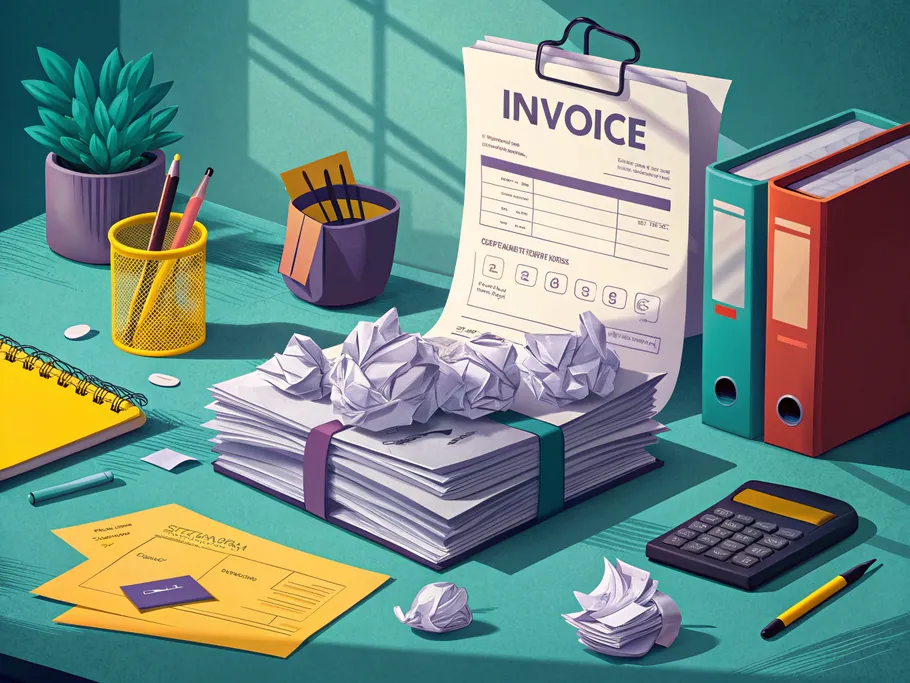Ever looked at your financial statements and thought, “What on earth is a ‘sales discount’ and why is it playing hide and seek in my revenue?” Trust me, you’re not alone. In the quirky world of accounting, sales discounts might seem like small fry, but they can have a big impact on your bottom line.
You see, there are two main types of discounts that pop up in businesses: trade discounts and sales discounts. Think of trade discounts as the wholesale club perks—they’re the deals given to customers who buy in bulk. These sneaky discounts don’t even bother showing up in your accounting records or financial statements. They’re like the secret menu item at your favorite diner.
But sales discounts? They’re the talkative ones. A sales discount happens when a seller offers a price reduction to encourage a customer to pay an invoice early. It’s like saying, “Pay me quick, and I’ll make it worth your while!” Unlike trade discounts, sales discounts proudly strut their stuff on your income statement.
In this article, we’ll unravel the mystery of what type of account sales discounts are and how they shimmy their way into your financial statements. Ready to dive in?
Related: Assets, Liabilities, Equity: Comparison

What Are Sales Discounts? (Hint: They’re Not Rocket Science)
So, what’s the deal with sales discounts? Think of them as the financial world’s version of a coffee loyalty card. You offer your customer a small reduction on their invoice as a thank-you for paying early. Everybody loves a discount, right?
Also known as cash discounts or early payment discounts, sales discounts reduce the amount owed by customers if they settle up within a certain period. You’ll often find these little incentives spelled out in the terms section of an invoice. Ever seen something like “2/10 net 30” and felt a sudden urge to solve for X?
Let’s decode that:
- 2/10 net 30: The customer gets a 2% discount if they pay within 10 days. Otherwise, the full amount is due in 30 days.
- 1/10 net 30: A 1% discount is on the table if payment is made within 10 days; otherwise, the full price is due within 30 days.
It’s like the seller saying, “Hey, throw the check in the mail now, and keep a little extra cash in your pocket!” And who wouldn’t want that?
Offering sales discounts isn’t just about being nice; it’s a savvy business move. Early payments improve your cash flow, reduce the time you’re acting as your customer’s unwilling bank, and lower the risk of bad debt. Plus, it saves you from those awkward “So, about that invoice…” conversations.
But let’s keep it real—there’s a flip side. While sales discounts can boost cash flow, they also nibble away at your revenue. It’s like giving up a slice of your pizza to get the rest delivered faster. Worth it? That’s up to you.
For customers, taking advantage of early payment discounts means paying less than the sticker price—score! However, if their cost of funds is higher than the discount, they might actually lose money by paying early. In that case, they might as well hang onto their cash a little longer.
See also: Where is the Accumulated Depreciation on the Balance Sheet?
What Type of Account Is Sales Discounts?
Alright, time to get a bit technical (but we’ll keep it fun, promise). So, what type of account is sales discounts? Drumroll, please… it’s a contra-revenue account! Cue the confetti!
“Wait, a what-now?” you might be thinking. Don’t worry—it sounds fancier than it is. A contra-revenue account is like the opposite twin of a revenue account. While your revenue account shows all the money flowing into your business from sales, the contra-revenue account shows the deductions from those sales. It’s the yin to your revenue’s yang.
In the case of sales discounts, this contra-revenue account keeps track of all those little reductions you offer for early payments. On the income statement, it sits right below your gross sales and reduces it to show your net sales. Here’s how it might look:
Gross Sales: $15,000
Less: Sales Discounts: $1,000
Net Sales: $14,000
See? The sales discounts are subtracted from gross sales to reveal the net sales. It’s like peeling back the layers to get to the juicy center of your actual revenue.
Why bother with this contra-revenue account business? Because transparency is key. Showing the discounts separately gives anyone reading your financial statements a clearer picture of how much you originally sold and how much was trimmed off due to discounts. It’s all about keeping things honest and above board.

Recording Sales Discounts: Keeping Tabs on Those Sneaky Discounts
Now that we’ve demystified what type of account sales discounts are, let’s talk about how to record them. Don’t worry; you won’t need a degree in rocket science or a magic wand.
When you make a sale on credit, you record the full amount in your Accounts Receivable account (an asset) and increase your Sales Revenue account. It’s like saying, “I sold this much, and someone owes me this much.”
Here’s a basic journal entry for a sale of $100:
- Debit: Accounts Receivable $100
- Credit: Sales Revenue $100
Easy peasy. But what happens when the customer takes advantage of a sales discount? Time to adjust those entries.
Suppose your customer gets a 1% discount for paying early. They pay $99 instead of $100. Here’s how you’d record it:
- Debit: Cash $99
- Debit: Sales Discounts $1
- Credit: Accounts Receivable $100
The $1 goes into the sales discounts contra-revenue account, reducing your net sales. It’s like capturing the discount gremlin and putting it where it belongs.
When reporting on the income statement, you’d display it like this:
Gross Sales: $20,000
Less: Sales Discounts: $300
Net Sales: $19,700
This way, anyone peeking at your financials can see exactly how much you gave up in discounts to get those early payments rolling in.
Related: Where are expenses in financials?
Examples of Sales Discounts in Action
Enough theory—let’s see how this works in the real world. Grab your calculator (or just follow along).
Selling merchandise with a discount
Scenario: Company XYZ sells merchandise worth $90,000 to Company ABC on credit. Payment terms are 5% discount if paid within 10 days, otherwise full amount due in 30 days.
Initial Sale Entry:
- Debit: Accounts Receivable $90,000
- Credit: Sales Revenue $90,000
If the Company ABC pays within 10 days and take the 5% discount, they pay $85,500 ($90,000 – $4,500 discount).
Receipt of Payment with Discount:
- Debit: Cash $85,500
- Debit: Sales Discounts $4,500
- Credit: Accounts Receivable $90,000
On the income statement, it looks like this:
Gross Sales: $90,000
Less: Sales Discounts: $4,500
Net Sales: $85,500
When Mr. John forgot about his privilege
Scenario: Company ABC sells products worth $30,000 to Mr. John on credit, with terms offering a 5% discount if paid within 15 days.
Initial Sale Entry:
- Debit: Accounts Receivable $30,000
- Credit: Sales Revenue $30,000
Mr. John pays on 16th day and … he pays $30,000.
Receipt of Payment with Discount:
- Debit: Cash $30,000
- Credit: Accounts Receivable $30,000
On the income statement:
Gross Sales: $30,000
Net Sales: $30,000

One more sales discount accounting example
Scenario: A manufacturer sells $900 worth of products with terms 1/10 net 30.
If the customer pays within 10 days, they get a 1% discount and pay $891.
Receipt of Payment with Discount:
- Debit: Cash $891
- Debit: Sales Discounts $9
- Credit: Accounts Receivable $900
Income statement reflects:
Gross Sales: $900
Less: Sales Discounts: $9
Net Sales: $891
See also: Common stock accounting
Takeaways
- Sales discounts are reductions in revenue given to customers for early payment. They’re not just goodwill gestures but strategic tools to improve cash flow and reduce credit risk.
- They are recorded as contra-revenue accounts on the income statement, carrying a debit balance that offsets the credit balance of gross sales revenue.
- Using contra-revenue accounts like sales discounts provides transparency in financial reporting, showing the original sales amount and the reductions applied.
- Recording sales discounts involves debiting the cash and sales discounts accounts and crediting accounts receivable when payment is received.
- Offering sales discounts is a trade-off between encouraging early payments and accepting slightly lower revenue. Whether it’s worth it depends on your business’s cash flow needs and financial strategy.
Understanding how sales discounts affect your accounts isn’t just academic—it’s a practical skill that can help you manage your business more effectively. So next time you spot a “2/10 net 30” on an invoice, you’ll know exactly what’s going on behind the scenes.
Related: How to account equipment?
